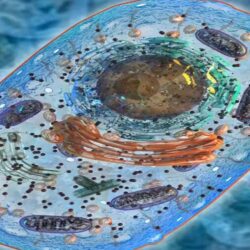What is the Amniotic Sac ?
Structure Of The Amniotic Sac
The amniotic sac is a vital structure that plays a significant role in the development and protection of the fetus during pregnancy. It is a fluid-filled sac that surrounds and cushions the growing embryo or fetus. The structure of the amniotic sac consists of two distinct layers: the inner amnion and the outer chorion.
The amnion, which is the innermost layer of the amniotic sac, is a thin, transparent membrane that directly surrounds the developing fetus. It is filled with a clear amniotic fluid that provides a buoyant environment for the fetus to move and grow in. This fluid also acts as a protective cushion, shielding the developing baby from external impacts and allowing for the free movement of the limbs.
The chorion is the outermost layer of the amniotic sac and is responsible for the exchange of gases between the fetus and the mother. It contains numerous blood vessels that facilitate the exchange of oxygen and nutrients from the mother’s bloodstream to the fetus, while simultaneously removing waste products such as carbon dioxide. The chorion also plays a crucial role in the production of hormones that are necessary for the maintenance of pregnancy.
- Overall, the structure of the amniotic sac is well-designed to provide optimal conditions for fetal development and protection. Its two distinct layers, the amnion and the chorion, work together to ensure that the fetus receives the necessary nutrients and oxygen while being shielded from external harm. The amniotic fluid provides buoyancy and cushioning, allowing the baby to move and grow freely within the sac.
- In addition to its structural role, the amniotic sac also serves essential functions in the development and growth of the fetus. It provides a stable and regulated environment for the baby, maintaining a constant temperature and protecting the fetus from fluctuations in the external environment. The amniotic fluid also aids in the development of the baby’s respiratory and musculoskeletal systems, as it allows for the practice of breathing movements and facilitates the growth and development of the limbs.
- The structure of the amniotic sac is a well-adapted and intricate system that offers protection, support, and nourishment to the developing fetus. Its two layers, the amnion and the chorion, cooperate to create an optimal environment for fetal growth and development. Understanding the structure and function of the amniotic sac is crucial in recognizing its significance in ensuring a healthy pregnancy and the well-being of the growing baby.
Function Of The Amniotic Sac
The function of the amniotic sac is an essential and critical aspect of pregnancy. This sac plays a vital role in protecting and nourishing the developing fetus throughout the gestation period.
One of the main functions of the amniotic sac is to provide a protective barrier around the developing embryo or fetus. It acts as a cushion, shielding the growing baby from any external pressure or impact. The amniotic sac is filled with amniotic fluid, which further contributes to this protective role. The fluid helps to absorb shocks and movements, preventing any potential harm to the fetus.
Another crucial function of the amniotic sac is to provide a stable and controlled environment for the developing baby. The sac helps maintain a consistent temperature, ensuring that the fetus remains at an optimal temperature for growth and development. Additionally, it provides a sterile environment, protecting the fetus against any potential infections.
Development Of The Amniotic Sac
The amniotic sac is an essential structure that plays a crucial role in the development of the fetus during pregnancy. It undergoes a fascinating development process that starts from the early stages of embryogenesis. The development of the amniotic sac is a complex and intricate series of events that contribute to the formation of a protective environment for the growing fetus.
One of the initial stages in the development of the amniotic sac is the formation of the amnion. The amnion is a thin, fluid-filled membrane that surrounds and protects the developing embryo. It is derived from the inner cell mass of the blastocyst, which later forms the fetus. The amnion begins to form around the eighth day after fertilization, enclosing the embryo and the amniotic cavity.
As the embryo continues to grow, the development of the amniotic sac progresses. A layer of cells, known as the amnioblasts, cover the inner surface of the amnion. These cells actively produce amniotic fluid, which fills the sac and provides cushioning for the developing fetus. Initially, the amniotic fluid consists mainly of water, but as the pregnancy advances, it also contains various nutrients, growth factors, and fetal waste products.
- In addition to protecting and cushioning the fetus, the amniotic sac plays a vital role in its overall development. It provides a stable and controlled environment that allows the fetus to grow and mature. The amniotic fluid acts as a buffer against external shocks, temperature fluctuations, and mechanical stresses. It ensures that the fetus is protected from harmful infections and allows freedom of movement for the developing limbs and muscles.
| Developmental Stage | Description |
|---|---|
| Embryogenesis | The amniotic sac starts forming around the eighth day after fertilization. The amnion surrounds the embryo and forms the basis for the sac. |
| Fetal Period | The amniotic sac continues to expand as the fetus grows. The amnioblasts actively produce amniotic fluid, which fills the sac and provides protection to the fetus. |
| Full-Term Pregnancy | The amniotic sac reaches its maximum capacity at the end of pregnancy. The fluid level is generally at its peak, ensuring optimal protection and cushioning for the fetus. |
The development of the amniotic sac is a remarkable process that contributes to the overall well-being of the fetus. Its formation, growth, and maturation are crucial for a healthy pregnancy. Understanding the development of the amniotic sac allows us to appreciate the complex biology behind the creation of a protective and nurturing environment for the developing fetus.
Rupture Of The Amniotic Sac
The rupture of the amniotic sac, also known as “breaking the water,” is a significant event that typically occurs during labor. This process involves the release of amniotic fluid from the sac, which surrounds and protects the developing fetus throughout pregnancy. While some women experience the rupture of the amniotic sac as a spontaneous and natural process, others may require assistance, such as artificial rupture of membranes, to initiate labor. Understanding the reasons behind the rupture and the potential consequences is crucial for both expectant mothers and healthcare providers.
The amniotic sac, comprising the amnion and chorion, acts as a protective barrier and provides a controlled environment for the developing fetus. Its primary function is to cushion the baby from external pressures and maintain a consistent temperature. The amniotic fluid, which is housed within the amniotic sac, plays a crucial role in fetal development by facilitating movement, promoting lung development, and aiding in the regulation of body temperature and fluid balance.
When the amniotic sac ruptures, it signifies that the body is preparing for labor. The rupture can occur spontaneously or be artificially induced by a healthcare provider. Spontaneous rupture often happens when the amniotic sac weakens near the end of pregnancy, and hormonal and mechanical factors come into play. On the other hand, healthcare providers may choose to rupture the amniotic sac artificially to help induce or progress labor when necessary.
- Complications and risks associated with amniotic sac rupture:
- 1. Prolonged rupture of membranes: If the amniotic sac ruptures, but labor does not begin within a certain timeframe, there is an increased risk of infection and other complications.
- 2. Infection: Once the protective barrier of the amniotic sac is breached, bacteria can enter the uterus, potentially leading to intrauterine infection.
- 3. Umbilical cord prolapse: In some cases, when the amniotic sac ruptures, the umbilical cord may slip through the cervix and descend into the birth canal before the baby, which can lead to compression of the cord and compromise the baby’s oxygen supply.
The rupture of the amniotic sac, whether spontaneous or artificially induced, is a significant event in the process of labor and childbirth. Understanding the function of the amniotic sac, the reasons for its rupture, and the potential complications is essential for expectant mothers and healthcare providers. It is important to monitor any signs of rupture and promptly inform a healthcare provider to ensure the well-being of both the mother and the baby.
Complications Related To The Amniotic Sac
The amniotic sac is a crucial structure during pregnancy, providing protection and nourishment to the developing fetus. However, like any other part of the body, it is not immune to complications. Complications related to the amniotic sac can arise due to various factors, including infections, abnormalities, and trauma. These complications can have significant implications for both the mother and the baby, necessitating swift medical intervention and close monitoring throughout the pregnancy.
One common complication related to the amniotic sac is premature rupture of membranes (PROM). PROM occurs when the membrane surrounding the amniotic sac tears or breaks before the onset of labor. This can lead to the leakage of amniotic fluid, increasing the risk of infection and potentially triggering early labor. It is essential to seek immediate medical attention if PROM occurs, as prompt intervention can help mitigate the associated risks and ensure the best possible outcome for both mother and baby.
In some cases, complications associated with the amniotic sac can result from infections. For example, chorioamnionitis is a bacterial infection that affects the amniotic sac and the amniotic fluid. It typically occurs when bacteria from the mother’s vaginal and genital area ascend to the uterus. Chorioamnionitis can lead to inflammation of the membranes, causing fever, abdominal pain, and an increased heart rate in the mother. It can also pose a risk to the baby, potentially leading to preterm birth, respiratory difficulties, and other complications.
Amniotic fluid abnormalities can also give rise to complications related to the amniotic sac. Insufficient levels of amniotic fluid, known as oligohydramnios, can be concerning as it may indicate poor fetal kidney function or a restriction in blood flow. On the other hand, excessive levels of amniotic fluid, termed polyhydramnios, might be a sign of gestational diabetes or certain fetal abnormalities. Regular monitoring of amniotic fluid levels through ultrasound scans can help identify these abnormalities and guide appropriate management.
Placental abruption is another potential complication related to the amniotic sac. This occurs when the placenta prematurely separates from the uterine wall before delivery. Placental abruption can deprive the fetus of oxygen and nutrients, leading to serious complications such as fetal distress, growth restriction, and stillbirth. It is a medical emergency that requires immediate medical attention and often necessitates prompt delivery of the baby.
In conclusion, while the amniotic sac plays a crucial role in ensuring a healthy pregnancy, it is not without its share of complications. From PROM and chorioamnionitis to amniotic fluid abnormalities and placental abruption, these complications require careful monitoring, timely intervention, and appropriate management to safeguard the well-being of both the mother and the developing baby. Regular prenatal care, including routine check-ups and diagnostic tests, is vital in identifying and addressing any complications related to the amniotic sac, promoting a safe and successful pregnancy.
Importance Of The Amniotic Sac In Pregnancy
The amniotic sac plays a crucial role in the development and protection of the fetus during pregnancy. It is a fluid-filled membrane that surrounds and cushions the growing baby in the womb. The importance of the amniotic sac in pregnancy cannot be overstated, as it serves several vital functions to ensure the well-being and healthy growth of the fetus.
One of the primary functions of the amniotic sac is to provide a secure and stable environment for the developing fetus. The amniotic fluid within the sac acts as a shock absorber, protecting the baby from external pressure and impacts. This fluid also helps to regulate the baby’s body temperature and prevents dehydration, ensuring that the fetus remains in an optimal and safe environment throughout pregnancy.
The amniotic sac also plays a crucial role in facilitating the proper growth and development of the fetal lungs. As the baby breathes in and swallows the amniotic fluid, its lungs gradually mature and develop. This fluid also helps to maintain proper lung function, preventing the lungs from sticking together and enabling them to expand and contract smoothly.
- Provision of nutrients: The amniotic fluid contains essential nutrients that are necessary for the development of the fetus. These nutrients are delivered through the placenta, which acts as the connection between the mother and the baby. The amniotic fluid helps to transport these nutrients to the baby, ensuring its proper growth and development.
- Protection from external factors: The amniotic sac serves as a protective barrier against external factors that could harm the fetus. It acts as a cushion, shielding the baby from any potential trauma or injuries. Additionally, the amniotic fluid helps to filter out any harmful substances that may be present, preventing them from reaching the developing baby.
- Promotion of movement and muscle development: The amniotic fluid allows the baby to move and exercise its muscles freely. This movement helps to promote healthy muscle and bone development. It also plays a role in the development of the baby’s central nervous system and coordination skills.
In addition to its numerous functions, the amniotic sac also serves as a diagnostic tool for healthcare professionals during pregnancy. By analyzing the content of the amniotic fluid, doctors can assess the health and well-being of the fetus. They can detect any abnormalities, genetic disorders, or infections by testing the fluid, allowing for early intervention or treatment, if necessary.
The amniotic sac plays a vital role in pregnancy by providing a safe environment for the baby’s growth and development. Its functions range from protecting the fetus and delivering essential nutrients to facilitating lung development and promoting movement. Moreover, it serves as a diagnostic tool for healthcare professionals to monitor the well-being of the fetus. The importance of the amniotic sac cannot be emphasized enough, as it ensures the optimal conditions necessary for a healthy and successful pregnancy.








